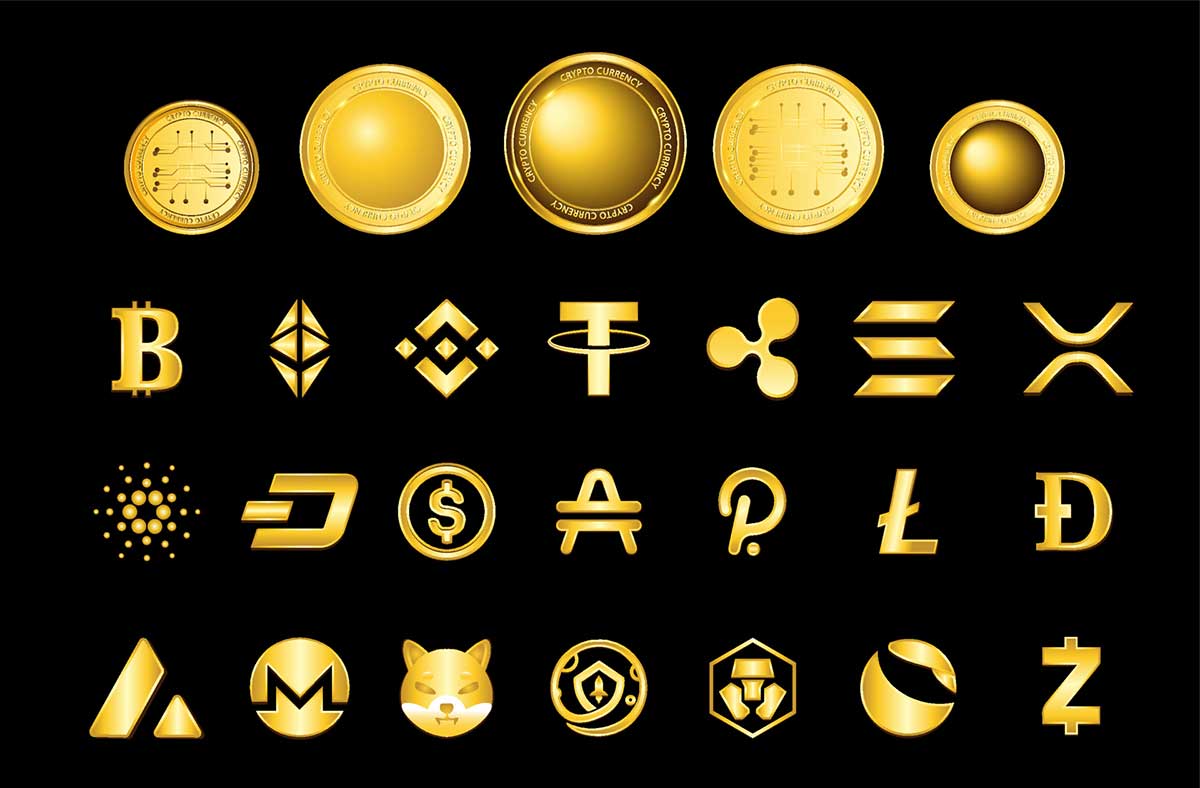How to Understand Blockchain: The Ultimate Guide

Understanding blockchain involves grasping the concept of a decentralized ledger. This technology enables secure, distributed, and transparent record-keeping for any type of transaction or data.
Blockchain is a relatively new technological innovation that has disrupted traditional business processes through decentralization. Blockchain technology enables a secure, transparent, and distributed ledger that keeps a record of transactions that cannot be altered or deleted without the consensus of network participants.
With the growing interest in cryptocurrencies like bitcoin, understanding blockchain technology has become increasingly important. Proper comprehension of blockchain technology can help individuals and organizations to improve security, transparency, and accountability across various industries. In this article, we will explore how blockchain technology works, its applications, and its potential benefits.

Credit: carboncredits.com
Understanding The Bitcoin Blockchain
Explanation Of The Bitcoin Blockchain
Bitcoin, the first cryptocurrency, uses an immutable decentralized ledger technology known as blockchain to maintain its transparent and secure transactions. Let’s take a closer look at what “blockchain” means in the context of bitcoin.
A blockchain is a digital database of transactions that are chronologically linked in blocks. In the bitcoin blockchain, transactions are grouped in blocks that are linked together in a sequential manner. Each block contains a unique code called a “hash” that represents the transactions in that block.
If any transaction in the block is changed, the hash will no longer match, alerting the network of the tampering attempt.
Mining Bitcoin
The process of creating new bitcoin, a procedure called “mining,” also involves the use of blockchain. Although blockchain serves as a tool for bitcoin to complete transactions, the blockchain’s backbone is the miners.
The mining process serves two purposes: validating new transactions and creating new bitcoin. Miners validate transactions by solving complex mathematical problems to create a new block in the bitcoin blockchain. In return, miners are rewarded with new bitcoin.
Bitcoin Blockchain Components
The bitcoin blockchain consists of various components as follows:
- Blockchain: The sequence of blocks containing transactions that form the bitcoin ledger.
- Nodes: A computer that validates transactions and maintains a copy of the blockchain.
- Hashes: Each block contains a unique code called a hash, which verifies the authenticity of the transactions.
- Transaction: An exchange of bitcoin between two parties.
- Wallet: A digital wallet that stores private keys to access personal bitcoin holdings.
Bitcoin Consensus Mechanisms
Blockchain’s fundamental pillar is its consensus mechanism. To maintain bitcoin’s integrity, the bitcoin community collaborates to agree that every transaction is valid, accurate, and unchangeable. The consensus mechanism used in bitcoin is called “proof of work. “
Proof of work is a process where miners compete to solve mathematical problems to build a new block in the blockchain. This system is not perfect and has some drawbacks such as high energy consumption and relatively slow processing times.
Nonetheless, it has shown remarkable robustness and reliability in maintaining the security and immutability of the bitcoin network.
Public And Private Blockchains
Blockchain technology is revolutionizing various sectors, from finance to healthcare to supply chain management. Understanding blockchain is essential, especially if you plan to invest in cryptocurrencies or use the technology to improve your business operations. We will delve into public and private blockchains, highlighting their differences and use cases.
Differences Between Public And Private Blockchains
The primary difference between public and private blockchains is their level of permission. Public blockchains are open to all participants, while private blockchains allow only authorized individuals or entities to access the network. Other differences include:
- Decentralization: Public blockchains are more decentralized than private blockchains, which are controlled by a central authority or consortium.
- Transaction speed and throughput: Because of their decentralized nature, public blockchains usually have slower transaction speeds and lower throughput than private blockchains.
- Consensus mechanism: Public blockchains use consensus mechanisms such as proof of work (pow) or proof of stake (pos), while private blockchains use consensus mechanisms tailored to meet specific requirements, such as proof of authority (poa).
What Are Public Blockchains?
Public blockchains are open to anyone who wants to participate in the network. They operate in a decentralized environment, meaning that no central authority controls the network. Some of the well-known public blockchains include bitcoin, ethereum, and litecoin.
Public blockchains offer several advantages, including:
- Transparency: All transactions on a public blockchain are public, meaning that anyone can view them.
- Security: Public blockchains are secure due to their decentralized nature and use of cryptographic algorithms to secure transactions.
- Immutability: Once a transaction is confirmed and recorded on a public blockchain, it becomes immutable, meaning that it cannot be altered.
What Are Private Blockchains?
Private blockchains are permissioned networks that allow only authorized individuals or entities to access the network. Private blockchains are usually used by companies or organizations to improve their internal operations. Some examples of private blockchains include hyperledger fabric, quorum, and corda.
Private blockchains offer several advantages, including:
- Privacy: Private blockchains offer privacy and confidentiality, meaning that only authorized individuals can access transaction data.
- Scalability: Private blockchains have higher transaction speeds and throughput than public blockchains, making them suitable for enterprise-level applications.
- Customization: Private blockchains can be customized to meet specific business requirements.
Use Cases For Public Blockchains
Public blockchains are suitable for various applications, including:
- Cryptocurrencies: Public blockchains such as bitcoin and ethereum are used to support cryptocurrencies and other digital assets.
- Decentralized applications (dapps): Dapps are built on top of public blockchains, offering various services such as prediction markets, social networks, and games.
- Supply chain management: Public blockchains can be used to track and trace products, ensuring transparency and accountability in the supply chain.
Use Cases For Private Blockchains
Private blockchains are suitable for various applications, including:
- Supply chain management: Private blockchains can be used to improve supply chain operations by providing better transparency, traceability, and efficiency.
- Healthcare: Private blockchains can be used to securely store and share patient data among healthcare providers, improving patient care.
- Financial services: Private blockchains can be used to improve financial services such as trade finance, securities settlement, and cross-border payments.
Public and private blockchains offer distinct advantages and use cases. Public blockchains offer transparency, security, and immutability, while private blockchains offer privacy, scalability, and customization. Understanding the differences between the two is essential in deciding which blockchain solution is suitable for your business.
How Blockchain Works
Blockchain is a digital ledger technology that records transactions on a decentralized network. By utilizing cryptography and distributed ledger technology (dlt), blockchain ensures transparency, security, and efficiency of transactions. In this guide, we will explore how blockchain works, the key coding languages used to build blockchain technology, and how cryptography fits into the overall blockchain framework.
How Blockchain Stores Data
Blockchain uses a unique data structure known as a “block” to store and record data. Each block contains three key components:
- Data: This is the actual information that is being stored. It could be anything from financial transactions to personal identity information.
- Block header: The block header contains important metadata about the block, including the block number and timestamp.
- Hash: A hash is a digital fingerprint of the previous block. This ensures that each block is connected in a secure and tamper-proof way, creating a chain of blocks, or a “blockchain”.
Overview Of Coding Languages
There are a variety of coding languages used to build blockchain technology. Some of the most popular ones include:
- Solidity: This is the language used to build smart contracts on the ethereum blockchain.
- C++: This language is used to develop the bitcoin core protocol, which is responsible for validating bitcoin transactions.
- Javascript: This language is used to create decentralized applications (dapps) on the ethereum blockchain.
Distributed Ledger Technology
Distributed ledger technology (dlt) is the backbone of blockchain. Dlt allows information to be stored on a decentralized network, rather than a centralized database. This makes it possible for everyone in the network to have access to the same information, creating a more efficient and trustworthy system.
Dlt is made up of a network of computers, or nodes, that work together to validate and approve transactions.
Cryptography In Blockchain
Cryptography plays a crucial role in ensuring the security and privacy of blockchain transactions. Each block on the blockchain is secured through a complex mathematical algorithm that is extremely difficult to crack. Additionally, each transaction on the blockchain is cryptographically signed to ensure that only the owner of the transaction can authorize it.
This means that each transaction is secure, transparent, and immutable.
Blockchain technology has revolutionized the way we transact by providing a transparent, secure, and efficient way to store and transfer information. By understanding the key components of blockchain, including how it stores data, the coding languages used to build it, distributed ledger technology, and cryptography, we can fully appreciate the power and potential of this innovative technology.
Blockchain Applications
As we dive deeper into the world of blockchain technology, it is important to understand how it can be used in various industries. From finance to healthcare to supply chain management, the potential use cases are endless. In this section, we will explore the use cases of blockchain across different industries, how businesses are implementing blockchain, and the future of this technology.
Use Cases Of Blockchain Across Different Industries
- In finance, blockchain can be used for faster, secure, and cost-effective transactions. It can eliminate the need for intermediaries, reduce fraud, and ensure transparency.
- In healthcare, blockchain can revolutionize medical record keeping, provide secure and transparent sharing of patient data, and streamline processes related to drug trials and research.
- In supply chain management, blockchain can increase transparency and efficiency by providing real-time tracking and traceability of goods, reducing the chances of counterfeiting, and improving the overall supply chain management system.
- In the entertainment industry, blockchain can enable creators to have greater control over their intellectual property and create new monetization models for their content.
Implementing Blockchain In Your Business
If you’re considering implementing blockchain in your business, here are some key points to keep in mind:
- Identify the areas of your business that can benefit from blockchain technology.
- Choose the right blockchain platform based on your specific business needs.
- Develop a proof of concept to test the feasibility of implementing blockchain in your business.
- Collaborate with your partners and stakeholders to ensure a smooth implementation process.
- Ensure proper training for your staff to leverage the full potential of blockchain technology.
Future Of Blockchain Technology
As the world becomes more connected, the potential applications of blockchain technology continue to expand. Here are some possibilities for the future of blockchain:
- Blockchain can potentially disrupt the traditional banking system by creating new financial models and enabling global financial inclusion.
- Blockchain can improve the election process by ensuring transparency and security of votes.
- Blockchain can enable more secure and efficient identity management systems.
- Blockchain can potentially transform the way we store and share data, making it more secure and decentralized.
It is evident that blockchain technology has the potential to revolutionize the way businesses operate across different industries. As companies continue to explore the possibilities of blockchain, we can expect to see more innovative use cases and applications emerge in the future.
Security And Risks Of Blockchain
Blockchain is a technology that is gaining popularity all over the world. It is being used in various industries and applications, including finance, healthcare, supply chain management, and many more. The technology provides a decentralized and transparent network for secure transactions.
However, there are security measures, vulnerabilities, and risks involved with blockchain technology. We will explore the security and risks of blockchain.
Security Measures In Blockchain Technology
Blockchain technology is based on the concept of cryptography, which ensures that the network is secure and immutable. Here are some security measures in blockchain technology:
- Consensus algorithms: Consensus algorithms ensure that all nodes in the network agree on the same version of the blockchain. This makes it impossible for any malicious actor to tamper with the blockchain.
- Public and private keys: Public and private keys ensure secure transactions. Each user has a public and private key that they use to sign transactions. The private key is kept secret and is only known to the user.
- Hash functions: Hash functions are used to ensure that any data on the blockchain cannot be tampered with. Each block on the blockchain has a unique hash code, and if anyone tries to change any data in the block, the hash code will change, making the tampering obvious.
Vulnerabilities Of Blockchain Technology
Despite its security measures, blockchain technology is not immune to vulnerabilities. Some common vulnerabilities are:
- 51% attacks: In a 51% attack, an attacker gains control of more than 50% of the network’s computing power, allowing them to manipulate the blockchain and reverse transactions.
- Smart contract vulnerabilities: Smart contracts are self-executing contracts that enforce the terms of an agreement. However, they can be vulnerable to faults that can be exploited by attackers.
- User errors: Users can make mistakes, such as losing their private keys or falling for scams. These errors can result in the loss of funds or data.
Risks Involved In Implementing Blockchain Technology
Implementing blockchain technology also comes with some risks. These risks include:
- Regulatory risks: The regulatory environment for blockchain technology is still evolving, and different jurisdictions have different rules. This can lead to legal uncertainty for businesses implementing blockchain technology.
- Scalability risks: Blockchain technology can be slow and costly, especially when dealing with a large number of transactions. This can limit its scalability and widespread adoption.
- Interoperability risks: There are many different blockchain platforms, and they may not be compatible with each other. This can create issues when different platforms need to communicate with each other.
Blockchain technology provides a secure and decentralized network for transactions. However, it is not without its security measures, vulnerabilities, and risks. Understanding these risks is important for businesses and individuals looking to implement blockchain technology.
Frequently Asked Questions On How To Understand Blockchain
What Is Blockchain Technology?
Blockchain technology is a decentralized, digital ledger of transactions that is maintained across a network of computers. Each block in the chain is verified and added chronologically, creating a secure and unalterable record.
How Is Blockchain Different From Traditional Databases?
Blockchain differs from traditional databases in several ways. It is decentralized, meaning there is no single point of control. It is secure, with each block in the chain verified and added chronologically. It is also transparent, as each transaction can be viewed by anyone on the network.
What Are Some Practical Uses Of Blockchain Technology?
Blockchain technology has many practical uses, including digital currency and asset trading, identity verification, supply chain management, voting systems, and more. It can also be used to create smart contracts that automatically execute when certain conditions are met.
Is Blockchain Technology Secure?
Yes, blockchain technology is highly secure. Each block in the chain is verified and added only after it has been authenticated by the network, ensuring that the data cannot be altered or tampered with without detection. Additionally, the decentralized nature of blockchain means that there is no single point of control or vulnerability.
How Does Blockchain Impact The Financial Industry?
Blockchain has the potential to revolutionize the financial industry by eliminating intermediaries and reducing transaction costs. It can also increase transparency and security, making it easier to track and verify transactions. Some experts predict that blockchain-based systems could eventually replace traditional banking services.
Conclusion
Understanding blockchain technology can be challenging, but it is not impossible. Blockchain is transforming the way industries operate, from finance to supply chain to healthcare. By grasping the fundamentals of this innovative technology, you can gain an advantage in your career and stay ahead of the curve.
The key to understanding blockchain is to start with the basics and build your knowledge from there. Don’t be intimidated by the complex jargon, as blockchain can be simplified into a decentralized, secure database that records transactions continuously. Furthermore, blockchain’s benefits include transparency, security, and efficiency.
The future of blockchain is bright, with more advancements and applications yet to come. Overall, blockchain is a technology worth learning about, and it is crucial to stay informed and keep up with the ever-changing landscape of the digital world.







